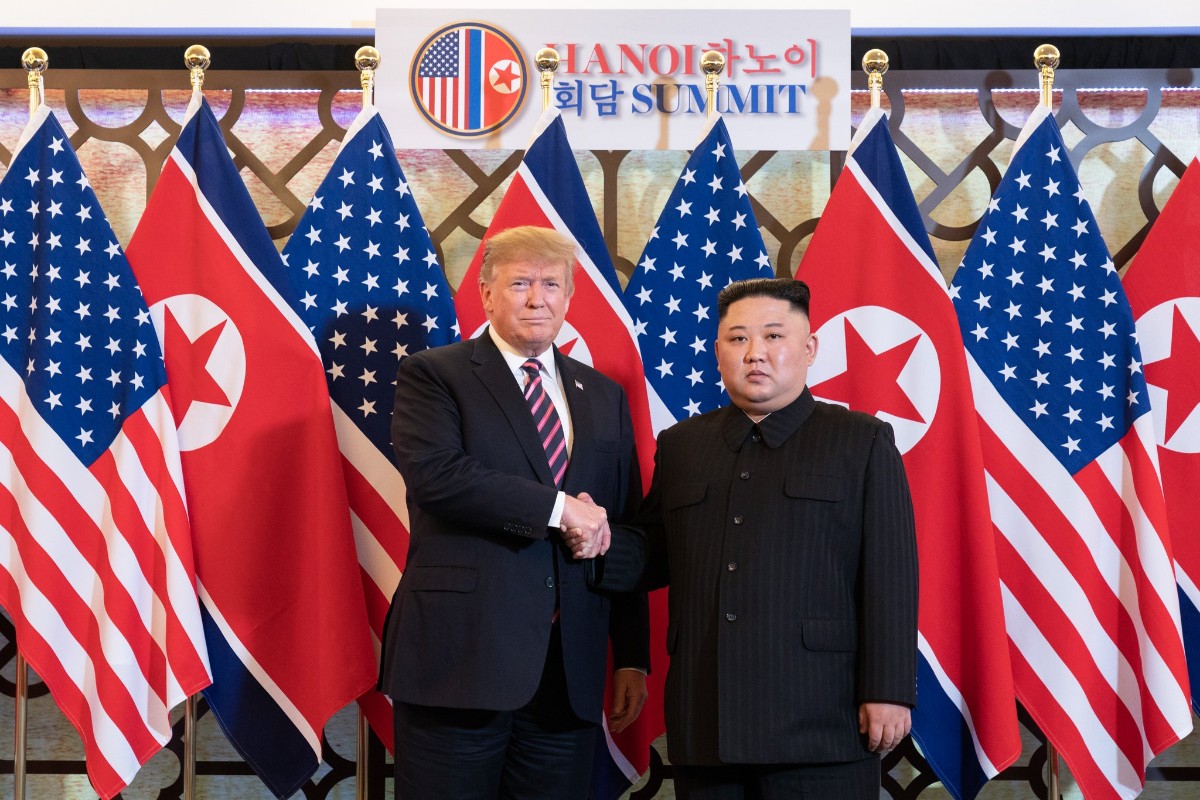 White House Photo
White House Photo
Assessing the Trump-Kim Meeting in Hanoi
The meeting in Hanoi between President Trump and North Korean leader Kim Jong Un can either be framed as a success or a failure, depending on which perspective one takes. Arguably, it is a mix of both. What is becoming evident to those engaged in this process—notably President Trump himself—is that the gap between US and North Korean interests in these negotiations remains wide.
According to President Trump, the talks fell apart over the discussion of sanctions relief, claiming Kim wanted total sanctions relief, while not giving the US concessions in the area it wants. However, the North Koreans claim that they only asked for partial sanctions relief. Given this, it’s no surprise that we have arrived at an impasse. It’s also no surprise that high level talks failed without the necessary progress that lower level discussions provide.
To understand where we are now, let’s look at the successes and failures of this round of talks:
A Success
Gauging this meeting as a success isn’t premised on whether North Korea agreed to denuclearize, it’s premised on the meeting not resulting in a bad deal for America.
President Trump walked away from North Korea’s demands. This is actually extremely promising. It demonstrates that the President, despite his praise and rosy rhetoric towards Kim Jong Un, is neither completely naïve or desperate for a deal. While this may be a low bar for success, given the risks involved and how badly it could have gone, it’s worth celebrating.
Diplomacy is often a long process. The agreements are rarely simple. Nuance is important. Even if the two leaders agree to a grand deal in principle, the procedural questions about how such a deal is implemented will require lower level negotiators to work out. Those lower level negotiators will have to get back to work.
A Failure
Obviously, no deal was signed at this meeting. North Korea hasn’t agreed to give up its nuclear weapons, and it is unlikely that North Korea will ever do so, so long as it sees a threat to its regime. At this time, there are no plans for a future meeting, and thus the meeting failed to accomplish anything tangible other than to establish that there is still a major disagreement.
Part of the reasoning for this failure is that there seems to be a great deal of confusion in the Trump administration over North Korea’s definition of denuclearization. For the US, this means the dismantlement of North Korea’s nuclear arsenal and the capacity to build it. For North Korea, this extends to the US nuclear umbrella over Japan and South Korea, and digs deep into US deterrent strategy in the region. This may not be a difference that can be rectified.
For the US and North Korea to head on a path for the latter to surrender its weapons, a great deal of supporting non-nuclear diplomacy will need to be done.
Where We Should Go from Here
The answer to this is more obvious than may appear: we keep talking. And we must find ways to talk about things other than the nuclear weapons issue. If nuclear weapons define the entirety of the relationship between the US and North Korea, then the reason for those weapons existing will likely never change.
There were some good ideas in the rumored agreement that might be struck in Hanoi, despite many declaring it heavily biased towards North Korea’s goals. For instance, beginning to implement diplomatic relations is an inherently worthy step towards trust-building. A liaison office will help facilitate dialogue, so long as there are guarantees about its safety. We have to remember, despite all the issues between the US and the Soviet Union during the Cold War, we maintained diplomatic relations. Frankly, it was too dangerous not to. Building ties and a diplomatic relationship is far better than the alternative of building suspicions and marching towards war. We need a basis of communication.
What has been made clear at Hanoi is that more communication is needed before denuclearization is a real possibility. It would be wise to coordinate more closely with South Korea, as it has made real progress in reducing tensions between the two countries.
As we try to figure out what’s next, we should ask what efforts we can pursue to eliminate North Korea’s fears, and continue to ratchet down the tension—while assuring our own interests are protected. Building trust in less threatening areas will be helpful for this, but trust will also require certain action from North Korea. It will require receptiveness to certain diplomatic overtures, such as exchange programs. But even before that, perhaps apologizing for the death of Otto Warmbier, and pledging it will never happen again, would be a good place to start.





